50 Years and 3000 Hours – A Porsche Reunion
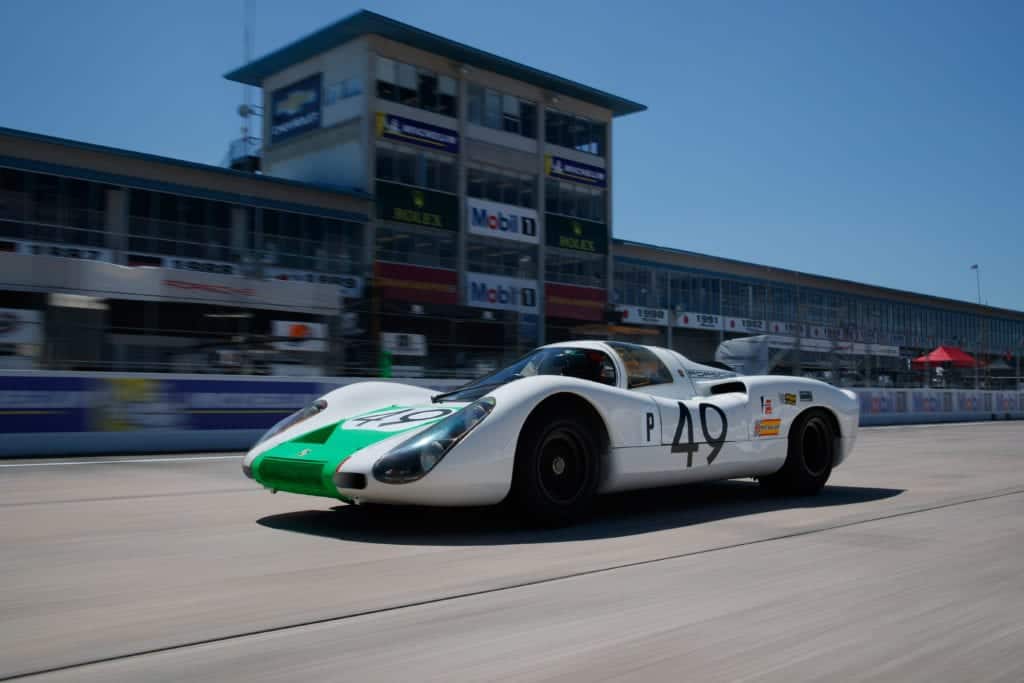
We are driving along pit lane at Sebring International Raceway when a yell comes through the handheld radio: “There’s a car on the track!” We’ve been granted only a few precious minutes for a reunion 50 years and 3,000 hours in the making. But the track marshal’s tone of dismay makes me wonder if our chance might get squelched before we even pull out onto the track.
The car in question is the 1968 Sebring 12-Hour-winning Porsche 907, which is returning to the famed circuit for the first time since its victory 50 years ago. For a few brief laps in between qualifying sessions for the 2018 Sebring race, the 907 will drive on the same concrete where it first achieved glory.
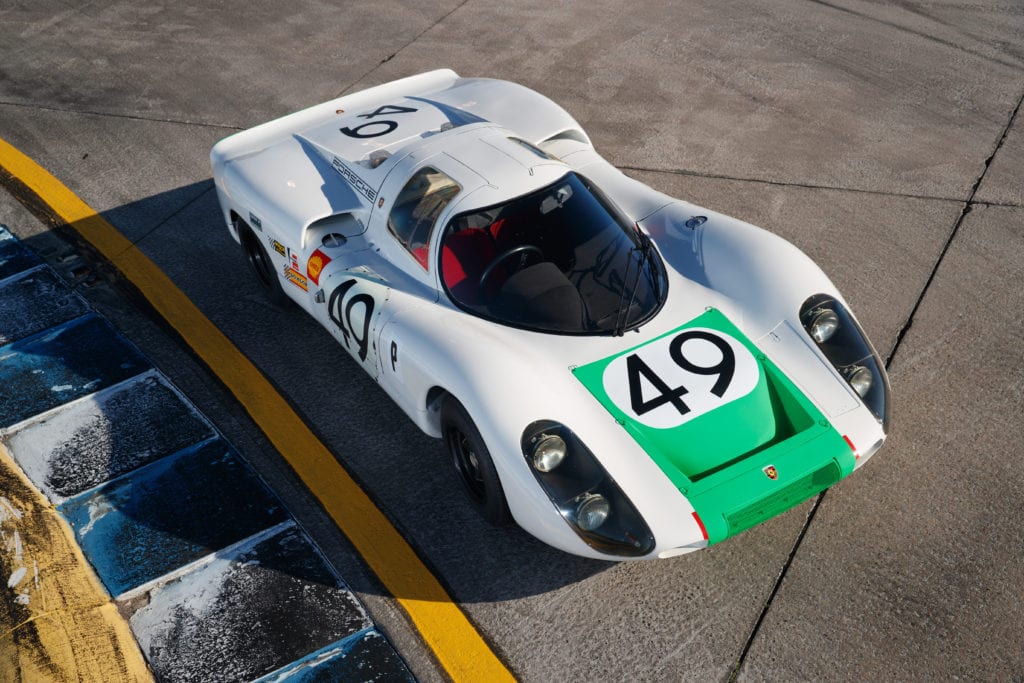
Just then, another voice comes through the radio: “If you don’t know what that car is, you shouldn’t work here!” We would not hear another peep on the radio from the track marshal after that.
Watching from the camera car as we progress along pit lane, the 907 seems tense, revving high despite the low speed. As the wide expanse of rutted concrete track opens in front of us, the 907 leaps ahead as if propelled by a suddenly released rubber band. Our driver, Gunnar Jeannette, who will be behind the wheel of the WeatherTech Ferrari 488 GT3 a few hours later, is relishing the experience.
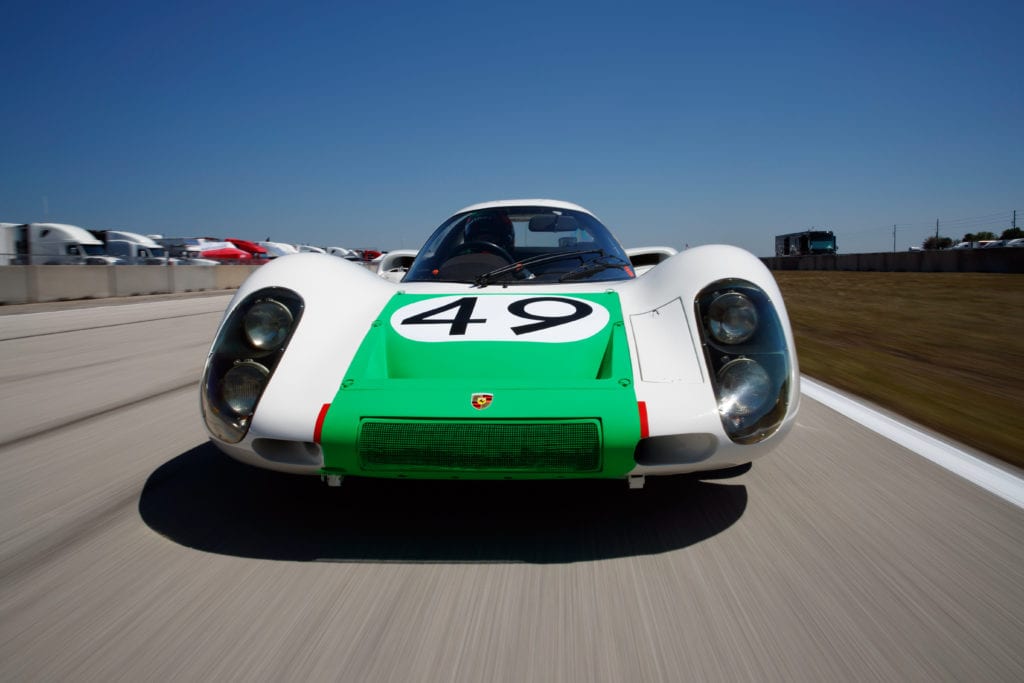
Much has gone into making this reunion between car and track happen. When collector Miles Collier purchased the 907 in 2014, it was like a jewel trapped inside a block of stone. Eccentric Swiss coachbuilder Sbarro, on behalf of the previous owner, had coated the fragile original body with three additional coats of fiberglass in a vain attempt to make the car more street-able. This added 300 pounds (the original car weighed 1,353 pounds), making the new fiberglass body the automotive equivalent of a sumo suit. It took 3,000 man-hours to shave off every shred of extra fiberglass while still preserving the original body underneath. This trip to Sebring is the car’s first public appearance since its restoration.
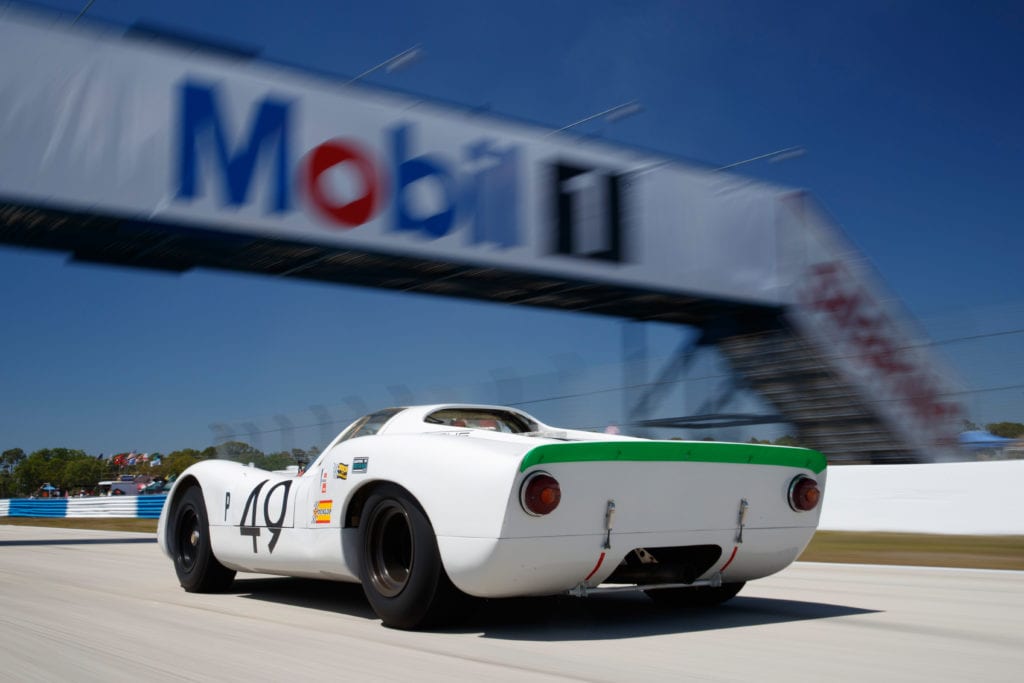
Since the track is scheduled to be empty, save for two pickup trucks towing jet engines to blow-dry debris from the track’s surface, the crowds aren’t paying any attention as we take a first lap. However, on the second go-round, I hear a few air horns tooting as we drive by. By our third and final lap, we have the race fans’ attention. They are waving and cheering with the exuberance for which Sebring’s crowds are notorious.
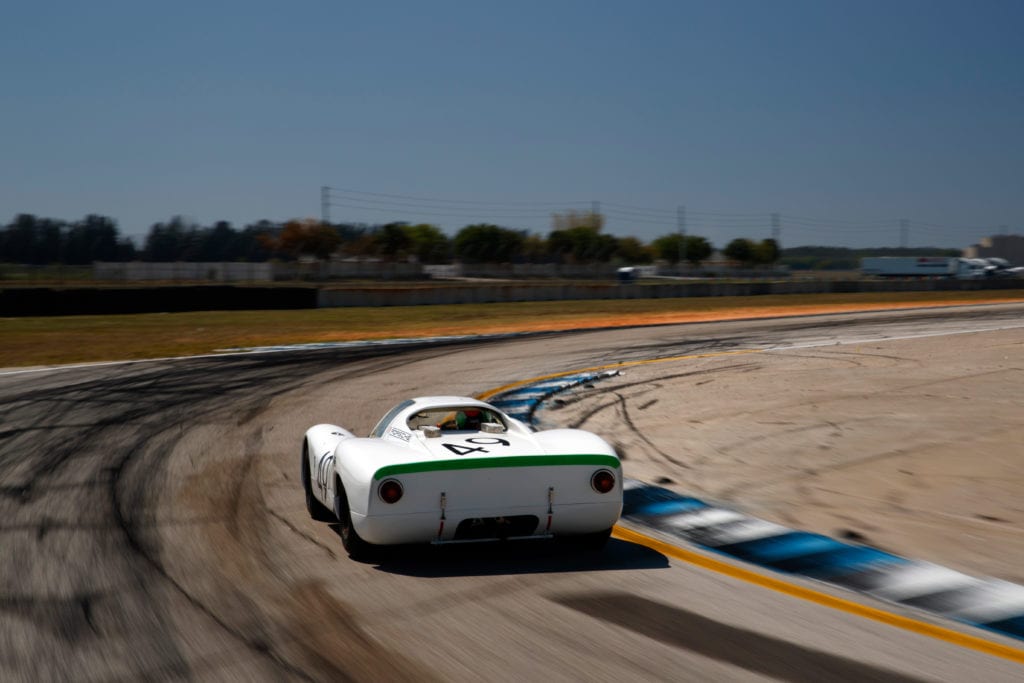
For the remainder of the race weekend, the 907 sits in the grandly named Gallery of Legends — a modest aluminum-sided building that for a few days in March turns into one of the best assemblages of race cars in the State of Florida. It is gratifying to stand in the corner and watch as the car is mobbed by appreciative enthusiasts. I can overhear parts of their conversations, and it is clear that the historical significance of the car’s return is not lost on them.
The fans are also likely aware that the Miles Collier Collection’s 907 owes its 1968 Sebring success not only to its superior Porsche engineering, but also to a somewhat arbitrary rule change. In an attempt to cap the increasingly dizzying speeds achieved by prototypes on the Mulsanne Straight at Le Mans, the rulemakers for international sports car racing decreed toward the end of the 1967 season that, in the following year, engines in prototype cars could not exceed 3 liters (about 180 cubic inches) in displacement. This left most manufacturers without a viable, up-to-date prototype challenger at the start of the 1968 season.
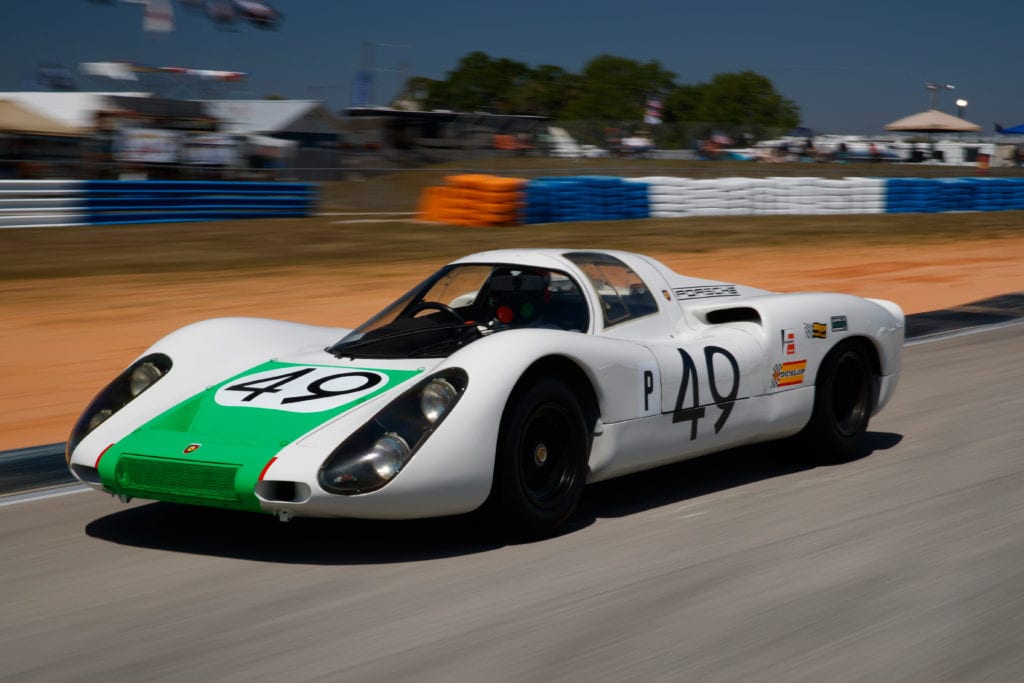
Unlike most of its competitors, Porsche stood to gain from this rule change because the 8-cylinder Type 771 engine in their flagship 907 was only 2.2 liters in size, far under the maximum allowed displacement. The engine made up for its lack of size with sophisticated engineering that gave it a remarkable 9200RPM redline without compromising reliability. It is revered today as one of the most complex but successful engines of its era.
The 907, which had achieved moderate success in 1967, stood poised to dominate in the first few races of 1968 until the competition could develop cars to comply with the new rules.
Still, when you see the Sebring track in person, you realize that it is not fair to consider any car or team a guaranteed winner. Indeed, that is part of the track’s appeal. The ballyhooed Sebring bumps, a polite euphemism for deep crumbling potholes, live up to their reputation. Spectators even wear shirts that read “Sebring: Respect the Bumps.” Twelve punishing hours in a high-strung race car, combined with the unknowns of competition, mean any victory at Sebring is worth celebrating and remembering.
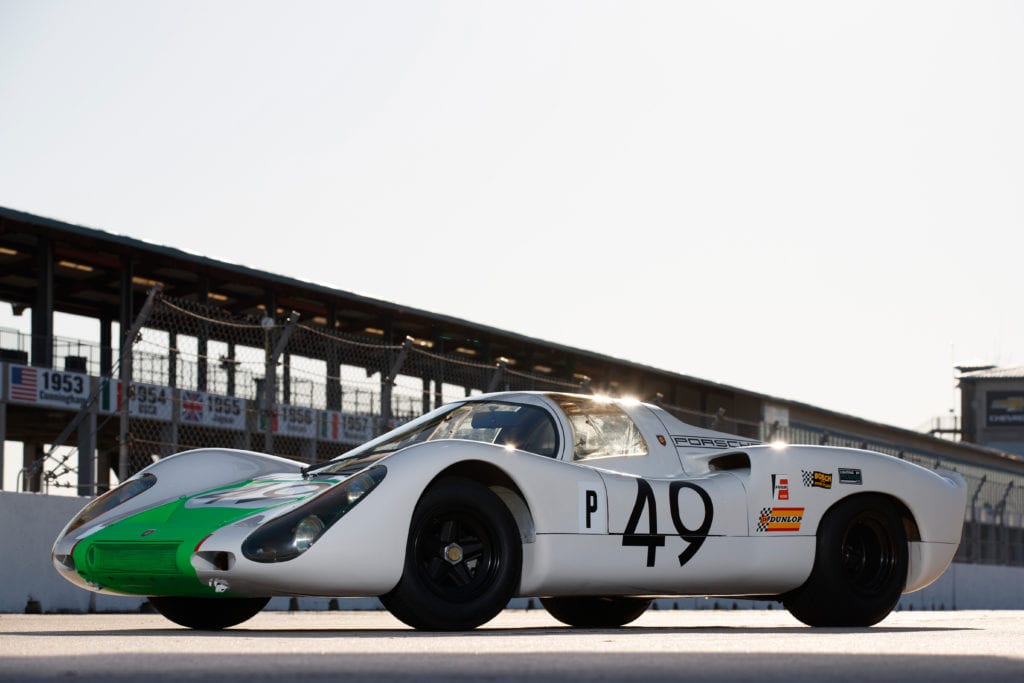
The 907’s trip to Sebring is ultimately that: a celebration — of the completion of a monumental restoration, of the car’s victory five decades before, of Porsche and Sebring’s place in motorsport history, and of our shared passion for racing automobiles. To be able to return the car to the scene of its most significant achievement, on the 50th anniversary of that win, and to be able to share it all with the race fans at Sebring is a rare privilege.
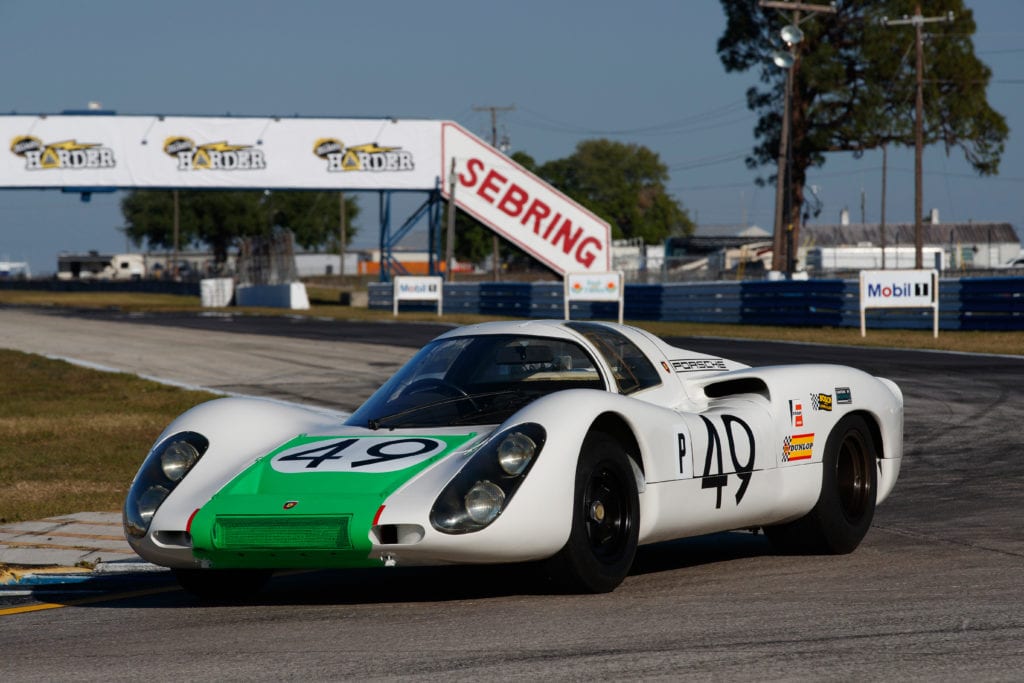
Photography by Richard Prince

